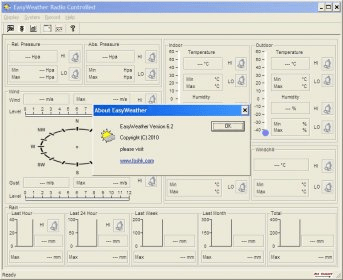

Tools for forecasting extreme weather have advanced in recent decades, but researchers and engineers at the National Oceanic and Atmospheric Administration are working to enhance radars, satellites and supercomputers to further lengthen warning times for tornadoes and thunderstorms and to better determine hurricane intensity and forecast floods. The intensity continued early in 2012 on March 2, twisters killed more than 40 people across 11 Midwestern and Southern states. Fourteen extreme weather and climate events in 2011-from the Joplin tornado to hurricane flooding and blizzards-each caused more than $1 billion in damages. April was the busiest month ever recorded, with about 750 tornadoes.Īt 550 fatalities, 2011 was the fourth-deadliest tornado year in U.S. A month earlier a record-breaking swarm of tornadoes devastated parts of the South, killing more than 300 people. The Joplin tornado was only one of many twister tragedies in the spring of 2011. Although emergency officials were on high alert, many local residents were not. The warnings had come sooner than they typically do, but apparently not soon enough.

A tornado watch had been in effect for hours and a severe weather outlook for days. Nearly 20 minutes before the twister struck on the Sunday evening of May 22, 2011, government forecasters had issued a warning. Winds exceeding 200 miles per hour tear a devastating path three quarters of a mile wide for six miles through the town, destroying schools, a hospital, businesses and homes and claiming roughly 160 lives. Then the blackened sky over Joplin, Mo., releases the tentacles of an enormous, screaming multiple-vortex tornado. Temperature trends in the Midwest show an overall warming of between 0.3˚F to 1.8˚F from data collected during the period of 1895-2006.After the deafening roar of a thunderstorm, an eerie silence descends. The climate however, is a trend over an extended period of time. Winter temperatures can vary just as much. Some days can be very warm, with record temperatures over 100˚Fahrenheit (F), with other summer days not even reaching 70˚F. Build background by providing the following example: The weather in Wisconsin can vary from day to day. Climate is an average pattern of weather for a particular region. The term climate describes weather patterns of a particular region over a longer period, usually 30 years or more. Make sure students understand that the term weather describes conditions in the atmosphere over a short period of time. Have students make connections between weather and climate.Īsk: What is climate? How does climate relate to weather? Some students may understand that the climate in areas closer to the Equator has fewer extremes than in the areas farther away from the Equator. Hail storm: cold or warm temperatures, rain, iceĪfter students have completed the worksheet, ask: What patterns do you see?Ĥ.Dust storm: strong winds, arid conditions.Blizzard: heavy snow, ice, cold temperatures.Hurricane or cyclone: strong wind, heavy rain.Tornado: clouds, strong wind, rain, hail.Their answers should include the following: Allow students to gather and organize the information they have learned about weather and atmospheric conditions present for each type of weather. Read aloud the directions and go over the provided answer. Have students complete the worksheet Weather Investigation.ĭistribute a copy of the worksheet Weather Investigation to each student. Ask: What are the factors that affect extreme weather? Elicit responses from students such as: the sun ( temperature), water ( precipitation), and other atmospheric conditions like jet stream, pressure, wind, humidity, and clouds.ģ. Then ask: What are the necessary conditions for each weather event to occur? Elicit responses from students such as: differences in circulating air masses, clashing warm and cool air masses ( fronts), and jet streams. Then, show the National Geographic video “Weather 101.” Ask students to describe the extreme weather events.

Invite volunteers to read aloud each caption. Display the photo gallery Extreme Weather. Tell students they will look at a photo gallery of extreme weather and then watch a video about weather. Discuss a photo gallery of extreme weather. Then ask students to sort the list into logical categories, such as types of weather, tools to measure weather, and effects of weather.Ģ. Activate students’ prior knowledge about extreme weather on Earth.Īsk: What do you know about extreme weather on Earth? Have students brainstorm a list of weather-related words and phrases.


 0 kommentar(er)
0 kommentar(er)
